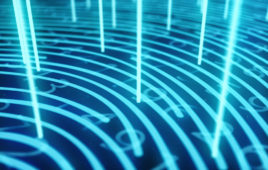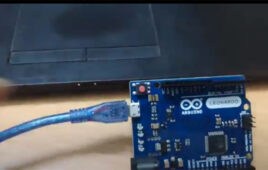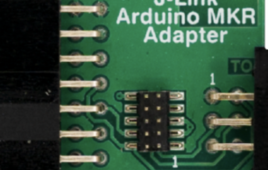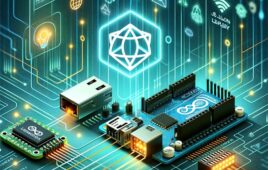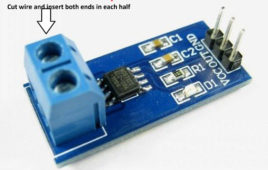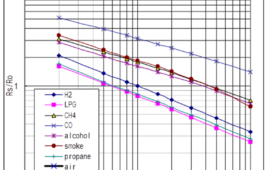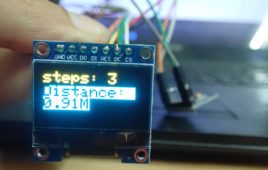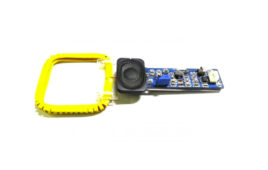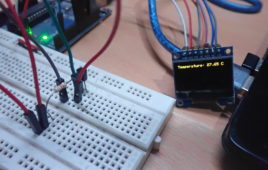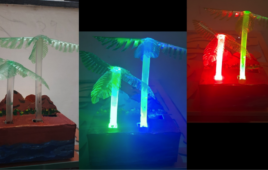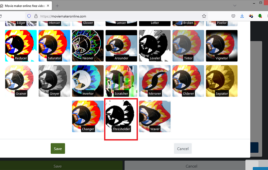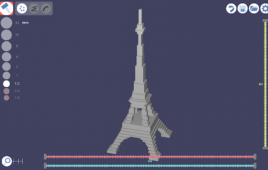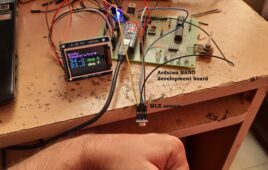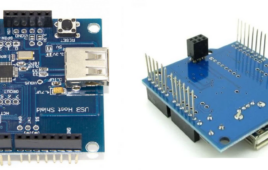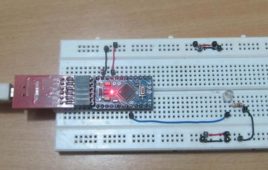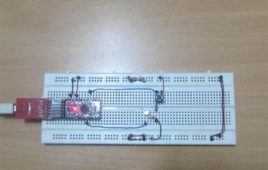Optical fingerprint scanners are prominent security devices nowadays. These scanners are low-cost and easy to use with any embedded hardware platform. The scanners have built-in memory and a controller to store and compare fingerprints. Usually, optical fingerprint scanners have a USB and/or UART port to communicate with external controllers or computers. The scanner handles enrollment…
How to convert Arduino into USB Rubber Ducky for automatic Gmail login
You might have heard about USB rubber ducky. A Rubber ducky is a programmed USB HID device, often a pen drive, to send a programmed sequence of keystrokes and mouse events to a computer. It is a powerful device that can unlock a PC or login credentials by inserting a USB stick. Even a rubber…
Versatile adapter addresses needs of Arduino community
SEGGER announces the release of the Arduino MKR Adapter, simplifying the connection of J-Link debug probes to Arduino boards from the MKR series. The adapter was originally developed for internal use to simplify SEGGER’s processes. It has since evolved into a standalone product, accessible to the broader Arduino community, eliminating the need for soldering and…
How to design a multi-use level indicator using Arduino
In this mini do-it-yourself (DIY) electronic project, we’ll design a multi-use level indicator that can measure multiple physical parameters like temperature, water, voltage, humidity, distance, and more. It consists of a bar-graph LED display that presents the measurements. Four main types of sensors are used to measure the different physical parameters, including the following LM35…
How to encode & decode JSON data in Arduino for IoT
JSON and XML are the most common data serialization formats. The Internet is a hub of billions of different devices, applications, and services. These devices and applications are built in different programming languages and around diverse platforms. For all these entirely different devices and applications to effectively communicate with each other, data is serialized and…
How to measure current using Arduino and ACS712 current sensor
In this tutorial, I am going to measure DC current using Acs712 Hall Effect-Based Linear Current Sensor and arduino uno. Acs712 can measure current precisely and accurately if properly managed. I have gone through various blogs on internet about interfacing acs712 current sensor with arduino and other microcontrollers. I found that all of them are…
Arduino-based portable pollution monitor with OLED display
A majority of middle-aged people suffer from health issues like asthma and breathing problems, particularly in cities. Air pollution is the major cause of it. In this project, we have designed a portable device that detects different air pollution metrics and displays them on a small OLED screen. People with respiratory issues can use the…
Arduino-based walking steps and distance calculator
A very common feature in Android and iOS fitness apps is calculating the number of steps the user walks and the distance he covers. These apps calculate the number of steps walked by the user either using GPS location and manipulating the geospatial data or by monitoring the acceleration vector of the device using an…
How to design an Arduino-based RLC metal detector using an RC-A-354 sensor
Metal detectors offer several useful applications. A few examples include: Security checks Positioning detection for production equipment Elevator floor control Mineral prospecting Unearthing relics and artifacts Collecting traffic statistics Metallic waste detection Game entertainment Each detection circuit employs different electronic components and designs. A simple metal detector can be constructed using an RLC circuit. In…
How to design Arduino-based water temperature monitor using DS18B20 1-wire temperature sensor
Environment sensors are of great importance in embedded applications. Many temperature sensors measure the ambient temperature or temperature of a surface. For measuring water temperature and other fluids, waterproof temperature sensors are required. One of such temperature sensors is DS18B20. This sensor can measure the temperature of the air, liquids like water, and ground. The…
RGB LED decorative, tabletop coconut tree
In this mini-DIY project, we will make a color-flashing coconut tree. It has two 3W RGB LEDs using, which generate multicolor flashing effects. Also, a tiny 8-pin microcontroller ATtiny85 generates eye-catching colorful LED-chasing effects. It is battery-operated, and the battery is rechargeable so it does not require a power connection through wires. It can be…
What are the top tools for developing embedded software?
The embedded software or firmware is the brain of an embedded device. However, this type of software works differently than the conventional ones on PCs or mobile devices — which are generic and work identically on such operating systems. PC software runs without directly accessing the underlying hardware. The purpose of embedded software works in…
What is the Modbus protocol and how does it work?
Modbus is a popular low-speed serial communication protocol widely used in the automation industry. The protocol was developed by Modicon (now acquired by Schneider Electric) in 1979 for its own programmable logic controllers. The protocol served as a link between PLCs and intelligent automation devices. Now an open protocol maintained by Modbus Organization, the Modbus…
How to play a video on an SSD1306 OLED
Small organic light-emitting diode (OLED) displays are commonly used in embedded devices. This is because OLEDs generally cost the same as character LCDs but feature a better user interface (UI) and user experience (UX). Typically, embedded OLED screens are used to display textual messages, but what about videos? For example, is it possible to playback…
The top modeling software for 3D printing in 2022
Additive manufacturing or 3D printing is more affordable than it’s ever been. Although some hobbyists buy a printer for crafts and to experiment with, it’s also an excellent engineering tool for innovative electronics or robotic projects. Typically, printers offer complimentary 3D models or free downloads that are ideal to start with. Eventually, you’ll likely want to…
What is LiDAR and how does it work?
LiDAR is an acronym for light detection and ranging, an optical technology for sensing distance. Early attempts to measure distance by light beams were first made in the ’30s, and airborne LiDAR became more commonly used in the ’60s, with geospatial measurements beginning in the ’80s. As the technology evolved, LiDAR’s uses continued to expand.…
Sensor value (data) display on TFT LCD using Arduino – Part III
Contactless body temperature measurement using MLX90614 sensor In the previous two articles of this tutorial series, I demonstrated how to display analog sensor data (like POT, LM35, soil moisture sensor, etc.) or smart digital sensor (DHT11) data on TFT LCD. In this third article, I will explain how to display body temperature on TFT LCD. It…
How to read input from USB keyboard on Arduino
Generally, Arduino boards can only serve as USB slaves. They cannot operate as USB hosts. That is why it is impossible to connect USB devices like a USB keyboard or mouse directly to Arduino. These generic USB devices can be a lot useful in many applications. For example, in some applications, a 4X4 keypad might…
Getting Started With Arduino- (Part 1/49)
Any AVR microcontroller based board which follows the standard arduino schematic and is flashed with the arduino boot-loader can be called an arduino board. The arduino is refered to as open source hardware, since the standard schematic is open to everyone and anybody can make their own version of arduino board following the standard schematic.
How To Use Digital Input And Digital Output Of Arduino- (Part 2/49)
There is no other tool available which helps in easy prototyping like the arduino does. Any AVR microcontroller based board which follows the standard arduino schematic and is flashed with the arduino boot-loader can be called an arduino board. The arduino can be used as a stand-alone board of which the output or inputs can be taken from the boards or given to the board using convenient connectors.Both digital and analog inputs and outputs are available in all arduino boards.

